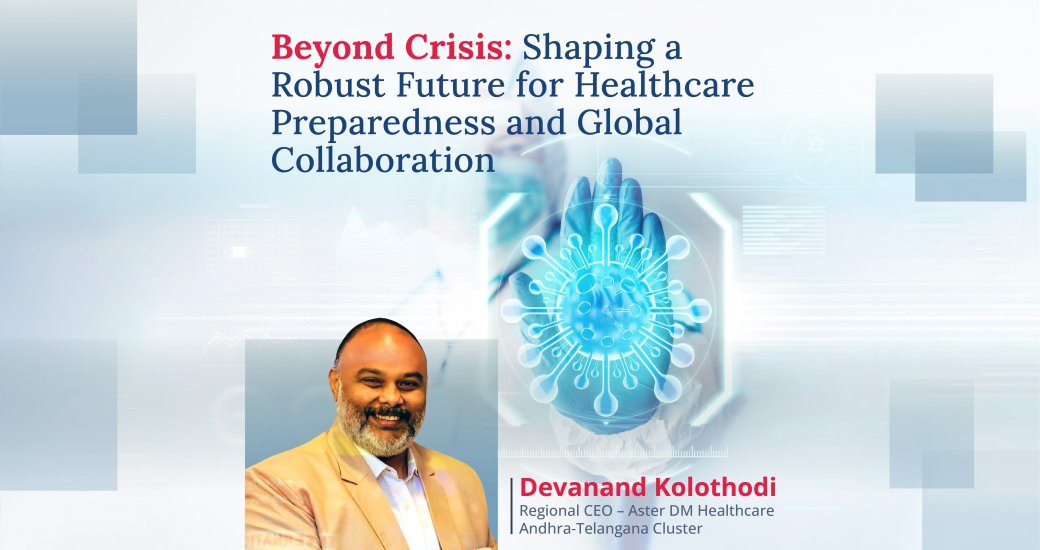
Healthcare organizations must focus on early detection, transparent communication, resource management, workforce resilience, technological integration, and international collaboration
As we approach the International Day of Epidemic Preparedness, it becomes imperative to reflect on the lessons learned from the COVID-19 pandemic and consider how healthcare organizations can enhance their preparedness for future challenges. The pandemic has laid bare the strengths and weaknesses of our healthcare systems, making it essential for us to critically assess past mistakes and formulate proactive measures for a resilient response to epidemics.
The COVID-19 pandemic has been a stark reminder of the unpredictable nature of infectious diseases and the paramount importance of a robust healthcare infrastructure. From overwhelmed hospitals with no beds to shortages of essential medical supplies, the challenges faced during this crisis have underscored the need for strategic planning, swift decision-making, and a comprehensive approach to epidemic preparedness. The importance of adaptable spaces that can swiftly transform to accommodate a surge in patients, with well-equipped isolation units to prevent disease spread was well understood. The need for scalability of Intensive care units ensuring sufficient capacity for critical cases and adequate ventilation systems for infection control was focused. Furthermore, strategic placement of sanitation stations, dedicated entrances for infectious cases, and optimized patient flow within the facility are considered essential components of physical infrastructure after the pandemic.
One of the key lessons learned is the importance of early detection and rapid response. The initial stages of the COVID-19 outbreak witnessed delays in recognizing the severity of the situation and implementing necessary containment measures. Healthcare organizations should prioritize investment in surveillance systems, advanced testing capabilities, and collaborative information-sharing networks to detect potential outbreaks at the earliest possible stage.
Moreover, the pandemic has shed light on the critical role of effective communication in managing public health crises. Clear and transparent communication from healthcare organizations is essential for disseminating accurate information, building public trust, and countering misinformation. Establishing robust communication channels internally and externally, along with proactive public health campaigns, can contribute significantly to an informed and cooperative response from the community. The usage of digital platforms can further strengthen this communication when the patients are isolated from their families.
Resource management has been a significant challenge during the COVID-19 pandemic. Hospitals were strained with shortages of ventilators, personal protective equipment (PPE), and critical medications. To enhance preparedness, healthcare organizations must invest in scalable and flexible resource allocation strategies. Building strategic stockpiles, diversifying suppliers, and implementing just-in-time inventory management can help ensure a steady supply of essential resources during a crisis.
The pandemic has also highlighted the importance of a resilient and adaptable healthcare workforce. Frontline healthcare workers faced unprecedented challenges, from the risk of infection to burnout and mental health strain. Hospitals and healthcare organizations must prioritize the well-being of their staff through adequate training, mental health support programs, and ensuring access to necessary resources. Cross-training healthcare professionals for diverse roles can further enhance the flexibility of the workforce during a crisis.
Investment in technology has played a pivotal role in pandemic response, from telemedicine to contact tracing apps. Healthcare organizations should continue to leverage technological advancements for improved patient care, remote monitoring, and data-driven decision-making. Robust telehealth infrastructure can facilitate access to healthcare services while minimizing the risk of transmission during epidemics.
Collaboration and coordination between healthcare organizations, governments, and other bodies are essential components of an effective epidemic response. The COVID-19 pandemic highlighted the importance of a unified global effort. Future preparedness should involve strengthening partnerships, sharing best practices, and establishing rapid response mechanisms to mobilize resources across borders.
It is crucial to acknowledge the positive strides made in vaccine development and distribution. The unprecedented speed at which vaccines were developed is a testament to the power of scientific innovation. Healthcare organizations must continue to invest in research and development, ensuring the availability of effective vaccines for emerging infectious diseases. However, the awareness related to vaccines is equally paramount. Alongside research and development, a concerted effort to educate the public about the importance of vaccination is essential. Healthcare organizations should actively engage in public outreach programs, dispelling misinformation, and fostering trust in the safety and efficacy of vaccines.
It is paramount to reflect on the experiences of the COVID-19 pandemic and channel those lessons into proactive measures for the future. Healthcare organizations must focus on early detection, transparent communication, resource management, workforce resilience, technological integration, and international collaboration. By learning from the past, we can collectively strengthen our preparedness and resilience, ensuring a more effective response to future health threats. As we navigate the complexities of the evolving healthcare landscape, the commitment to continual improvement remains our most potent weapon against the uncertainties that lie ahead.










